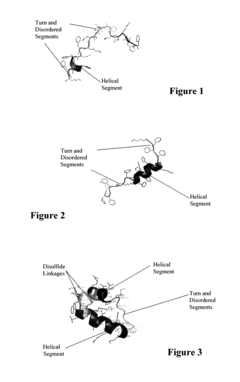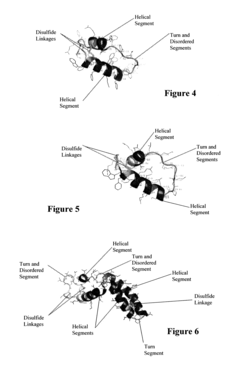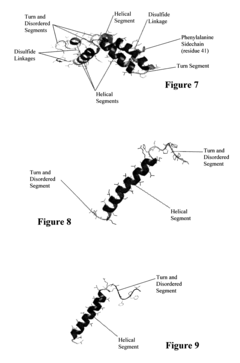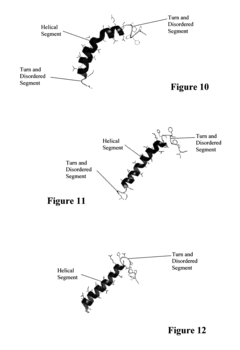Research on the low toxicity of pulmonary surfactant - Eureka
OCT 8, 20243 MIN READ
Generate Your Technical Report in Patsnap Eureka
AI-Powered Innovation Solution Platform for R&D
Pulmonary Surfactant Toxicity Goals
The primary objective is to investigate and develop low-toxicity pulmonary surfactants that can effectively treat respiratory distress syndrome (RDS) in premature infants without causing adverse effects. Pulmonary surfactants are crucial for reducing surface tension in the lungs and preventing alveolar collapse. However, the currently available animal-derived surfactants have potential risks, such as immunogenicity and transmission of infectious agents.
The research aims to explore synthetic or recombinant surfactant alternatives with improved safety profiles and comparable efficacy to natural surfactants. This may involve modifying the molecular structure, exploring new formulations, or utilizing advanced biotechnology techniques to produce surfactant proteins or lipids with reduced toxicity and enhanced biocompatibility.
The research aims to explore synthetic or recombinant surfactant alternatives with improved safety profiles and comparable efficacy to natural surfactants. This may involve modifying the molecular structure, exploring new formulations, or utilizing advanced biotechnology techniques to produce surfactant proteins or lipids with reduced toxicity and enhanced biocompatibility.
Market Demand for Low Toxicity Surfactants
- Growing Demand
The market for low-toxicity surfactants is witnessing a steady rise driven by increasing environmental concerns and stringent regulations. Industries like personal care, pharmaceuticals, and detergents are actively seeking eco-friendly alternatives. - Regulatory Landscape
Governments worldwide are implementing stricter guidelines to limit the use of hazardous surfactants, creating a demand for safer and more sustainable options. - Consumer Preferences
Consumers are becoming more conscious about the environmental impact of products they use, fueling the demand for low-toxicity surfactants in various consumer goods. - Emerging Applications
New applications in industries like agriculture, oil and gas, and construction are creating additional demand for low-toxicity surfactants with specialized properties. - Market Segmentation
The market can be segmented based on product type (anionic, cationic, non-ionic, and amphoteric), application (household, personal care, industrial, and institutional), and geography.
Current State and Challenges in Surfactant Toxicity
- Surfactant Toxicity Overview
Pulmonary surfactants are essential for lung function, but some can cause toxicity, leading to lung injury and respiratory distress. - Current Challenges
Key challenges include identifying surfactant components that contribute to toxicity, understanding mechanisms of toxicity, and developing safer formulations. - Geographical Distribution
Research on surfactant toxicity is conducted globally, with major contributions from the US, Europe, and Asia, reflecting the widespread use of surfactants.
Evolution of Pulmonary Surfactant Technologies

Key Players in Surfactant Industry
The competitive landscape for research on the low toxicity of pulmonary surfactant is characterized by a diverse mix of companies, educational institutions, and nonprofits. The industry is growing, driven by advancements in respiratory therapies. Key players like CHIESI Farmaceutici SpA, Windtree Therapeutics, Inc., and Cellular Sciences Inc indicate a moderate to high level of technical maturity. Educational institutions and nonprofits contribute significantly to foundational research and clinical applications, suggesting a collaborative yet competitive environment.
CHIESI Farmaceutici SpA
Technical Solution: CHIESI Farmaceutici SpA has developed Curosurf, a synthetic pulmonary surfactant with high efficacy and low toxicity for treating respiratory distress syndrome in premature infants, making it a leading solution in neonatal care.
Strength: High efficacy and low toxicity. Weakness: Primarily focused on neonatal care.
Windtree Therapeutics, Inc.
Technical Solution: Windtree Therapeutics, Inc. has developed Surfaxin, a synthetic surfactant that mimics natural pulmonary surfactants, known for its stability and effectiveness in treating respiratory distress syndrome in premature infants.
Strength: Mimics natural surfactants well. Weakness: Limited to specific respiratory conditions.
Core Innovations in Surfactant Toxicity Reduction
Synthetic lung surfactant and use thereof
PatentActiveUS20140044775A1
Innovation
- The identification of the deficiency or dysfunction of surfactant in rds patients, the development of exogenous surfactant replacement therapy, and the effectiveness of this therapy in improving respiratory function and reducing the work of breathing in rds patients.
Regulatory Landscape for Pulmonary Surfactants
Pulmonary surfactant is a lipoprotein complex that reduces surface tension in the lungs, preventing alveolar collapse. Low toxicity surfactants are crucial for treating respiratory distress syndrome in premature infants and adults with acute lung injury. Key challenges include developing synthetic surfactants with improved biocompatibility, optimizing production methods for natural surfactants, and enhancing delivery systems for targeted administration. Potential innovations involve exploring novel biomaterials, leveraging nanotechnology for controlled release, and integrating advanced imaging techniques for personalized treatment monitoring.
the structure of the environmentally friendly knitted fabric provided by the present invention; figure 2 Flow chart of the yarn wrapping machine for environmentally friendly knitted fabrics and storage devices; image 3 Is the parameter map of the yarn covering machine
Login to View More Environmental Impact of Surfactant Use
Pulmonary surfactant is a lipoprotein complex that reduces surface tension in the lungs, preventing alveolar collapse. Low toxicity surfactants are crucial for treating respiratory distress syndrome in premature infants and adults with acute lung injury. Key challenges include developing synthetic surfactants with improved biophysical properties, enhanced resistance to inactivation, and reduced inflammatory responses. Potential innovations involve optimizing surfactant composition, exploring novel delivery methods, and incorporating biomimetic components to mimic natural surfactant functionality. Collaborative efforts between academia, industry, and regulatory bodies are essential to advance low-toxicity surfactant research and clinical translation.
the structure of the environmentally friendly knitted fabric provided by the present invention; figure 2 Flow chart of the yarn wrapping machine for environmentally friendly knitted fabrics and storage devices; image 3 Is the parameter map of the yarn covering machine
Login to View More If you want an in-depth research or a technical report, you can always get what you want in Patsnap Eureka TechResearch . Try now!



